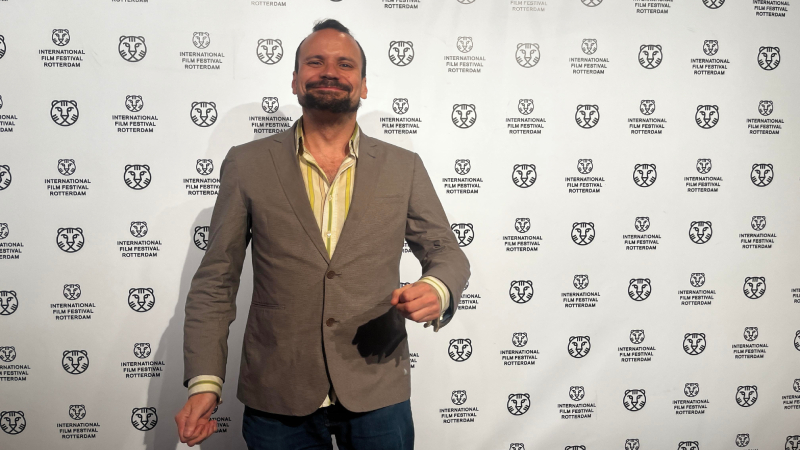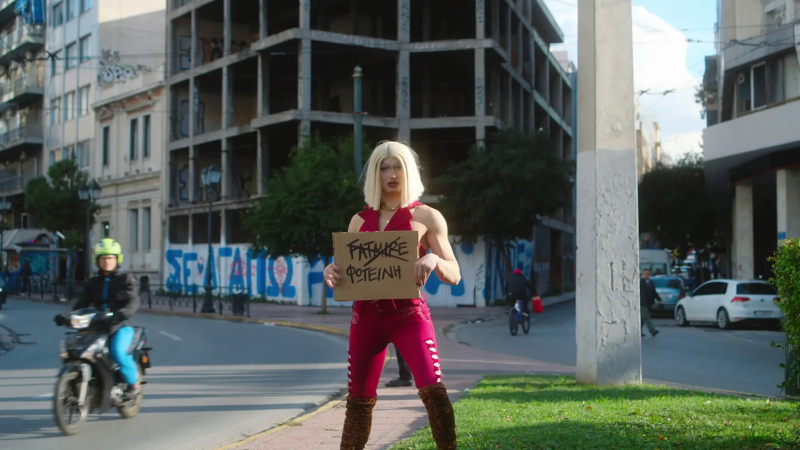A young gang – a slick gun-toting Lothario, a troubled soul caught between his spiritual conscience and his immediate environment, a thief searching for a purpose outside of his role as a sibling – divide their thefts with members of their community. Concerned for the inhabitants of their local favela, the group engage in violent activities in the hope of ensuring greater prosperity for their siblings. What follows is a wry and sharply-written examination of violence in some of the poorer parts of Brazil, where a young and hopefulRocket (Alexandre Rodrigues) must come to terms with the cold, hard realities of life.
The all but wordless opening where Rocket rescues a chicken from being shot by a paramilitary group stands as one of the most innovative first shots in a Brazilian film. The camera flips around the central protagonist, plunging him and the listener back in time, where a simple game of football turns nasty. Partly it’s the restrained camera work (César Charlone depicts the gruelling slaughters in a holistic, quasi-documentary, manner), partly it’s the sense of drama clinging to the character’s chest; ultimately, . And yet it’s also something of a revelation, deepening the relationship between filmmaker and viewer, to make the experience a personal one for all to sink their teeth into.
City of God is almost entirely focused on the soul of man under enormous misfortune, but this is the strongest work of the three, because it spans across a nation’s history, and by doing so, invites audiences to query their positions in life. Furthering the authenticity, directors Meirelles and Kátia Lund cast some inhabitants from the actual City of God favela, which might explain why the movie felt so authentic when it was released in 2002.
More so than Justin Quayle in The Constant Gardener (Fernando Meirellles, 2005), Rocket serves as Meirelles’ eyes and ears, exhibiting the horrors of his environment, regardless of the character’s visceral disgust. In this society the “exception” swiftly becomes “the rule”, as the inhabitants grow more accustomed to the sight of bodies piling on the streets. Rocket is neither a loner nor an outside voice; he’s just one of the people caught in the fire. The more he searches for an escape route, the greater his life is at risk. Like the audience watching the film, Wilson Rodrigues has to ask himself whether it’s worth pursuing his ideals, or ignoring them for personal wealth.
Masterfully directed and at 130 minutes, City of God proved to be a monumental success (the Guardian elected it the fourth greatest foreign movie of all time, in just one of the countless accolades that the movie boasts), largely because it matched the urgency and fast-paced cutting style expected of its contemporary audiences. Better still, the directors push audiences headfirst into the reality, presenting the mania, regret and ecstasy that comes in this line of small crime. The film is neither pro- or anti-gun, as the finished product does anything but deliver you easy answers. But what it offers is something deeply human, conjuring a world where humans watch their ambitions fall as quickly as the bodies shot in the hearts. Rocket inhabits this depiction of Brazil: a country stripped of idealism for drugs, debauchery and gang war. It’s not the story of the small man up against a huge, faceless enemy, but that of a society stripped of its character and sense of community.

The movie presents us with an objective lesson in pragmatism, a world where a retired soldier (played with birdlike elegance by Seu Jorge) can use his skills for maximum profit. The intensity is such that Rocket realises it takes more than courage to make it in the world of crime; “You need ideas”. This is a deliberate consequence of his geography, his generation and his general grasp of reality. Introspection is a luxury only the richest can afford in this corner of Latin America – the majority stand by their weapons. Not only does the film focus on this aspect, it accentuates the landscape to the point where it becomes something of a character in the narrative.
“The City of God was divided,” Wilson notes at one harrowing point during the runtime.”You couldn’t go from one section the other, not even to visit a relative. The cops considered anyone living in the slum a hoodlum”. The world has seen its fair share of division, segregation driven by differences of religion, race and greed. What’s heartbreaking about this work is that the warfare didn’t stem from ideology or identity, but a quest for purging violence, and the gangs don’t discriminate based on race (there are black gang members, as well as white), but the quality of the work. It’s a warfare and sense of destruction that belongs in its own category entirely. Free to shoot whomever and whatever the perpetrator aims at. In adapting Paulo Lins novel, Meirelles and Lund replace the lyricism with a world-weary narration, recorded by an actor who undoubtedly witnessed enough crime to elevate the truth from the words.
Watching it 22 years later, the finished work maintains much of its power, particularly in its depiction of vengeance, which is executed with cucumber cool demeanour. It’s almost impossible not to wince at the child who must choose between his “feet or hands”, after his friends abandon him to the local criminal gang. Everyday existence is simply impossible in this area of the world where crime is the only currency that commands any level of respect.
City of God‘s strong focus on Afro-Brazilian characters and narratives helped to spur a generation of Black talent. Two actors, Douglas Silva and Darlan Cunha, went on to star in the television series City of Men and the eponymous film (Paulo Morelli, 2007), about two young males raised without a father in the favelas. Seu Jorge starred in Marighella (Wagner Moura, 2019), and many other films. Black Brazilian filmmakers are no longer a rare occurrence: recent names include Deo Cardoso of A Bruddah’s Mind and Lazaro Ramos of Executive Order, both from 2021.
The influence of Meirelles’s movie can also be sensed beyond Brazilian borders. It is possible to discern some of the grittiness in Paul Greengrass’s The Bourne Supremacy, made just two years later. There are barely any romantic flourishes, every killing is handled quickly, and with nary a quip to accompany it. Whenever a joke emerges, it’s done in order to highlight the absurdity of the situation. Some speculate that Danny Boyle’s Slumdog Millionaire (2009) may have been inspired by City of God. These are just two examples. The universal impact of City of God on cinema is impossible to measure.
City of God is back in cinemas on Friday, February 23rd.










